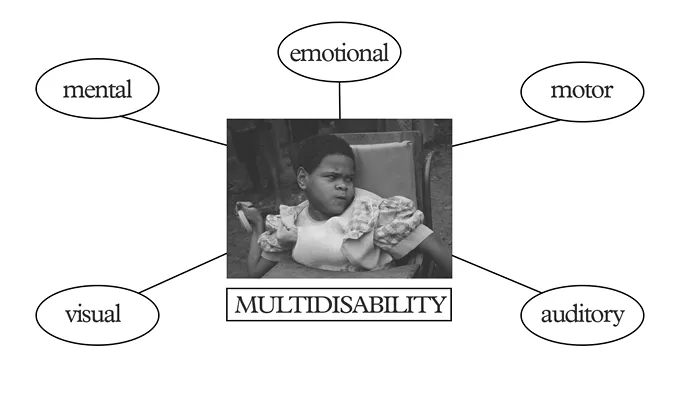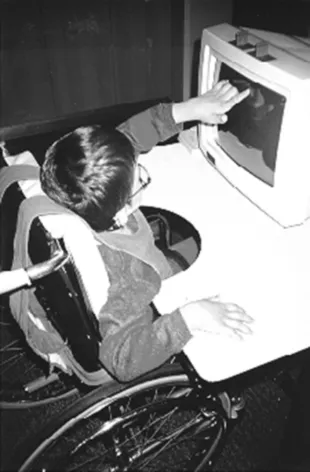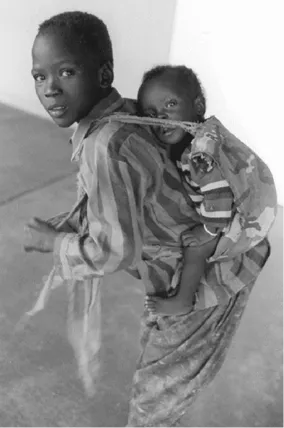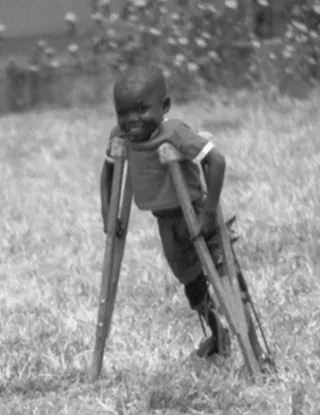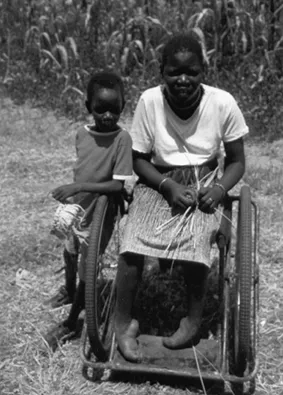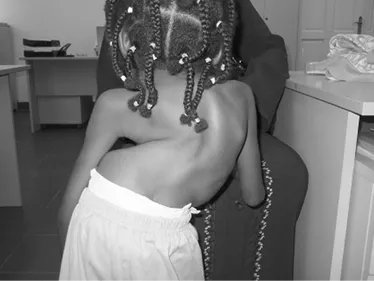![]()
Chapter 1
Multidisability in children
1.1 What is multidisability
Multidisability refers to a clinical picture grouping various disabilities that depend on the same cause which determines a concurrent reduction or loss of different abilities, with the consequent impairment of the level of autonomy that each disability in itself would imply.
This does not mean that multidisability is to be considered as the sum of two or more disabilities, namely of motor, mental, emotional, visual and/or auditory kind. Rather, it is to be considered as a clinical picture in itself, a manifestation of diffuse encephalic disturbances involving different areas of the Central Nervous System and hence different functions.
In this work we will therefore focus on subjects with in-born severe encephalopathy occurred before, during or after birth.
The disease can have a different impact on families according to whether the cause is known – for instance, severe hypoxemia (i.e. a lack of oxygen in the brain), intracranial haemorrhage whose signs are visible since birth, or still head trauma occurred after birth, even in the first months of life – or not. In the latter case, pathological signs gradually emerge during the first year of life and the clinical picture can either be attributed to genetic damage or remain unknown. Each starting point determine different reactions within the environment in which children live that will influence their future life.
Identifying typical features of multidisability implies avoiding a generic definition of this specific clinical picture that is generally severe, especially at motor level.
Such features vary widely according to two key factors: the extent to which the lesion affects motor, mental, sensory and relational functions; and, above all, the potential acquisition of autonomous motion and self-care and of an adequate level of communication, which is peculiar to single individuals.
As far as autonomy and communication are concerned, we will therefore provide a specific outline of the various clinical pictures taking into account the complexity of the situation and the possible negative interferences due to a reduction in the children’s skills. We will also mention the emergence of other possible medical complications such as epilepsy, breathing diseases, gastro-oesophageal disturbances, obesity, and behaviour disorders such as autism secondary to cerebropathy, inappropriate behaviour responses, introversion and sleep disorders (Fig. 1).
Fig. 1 – A child with multidisability isolating from her context
These problems depend on the type and level of family and social acceptance multidisabled children experience and on the lack of esteem they perceive, especially when their disabilities are not severe and they show a high level of awareness. Such situation can lead to conduct disorders.
1.2 Motor and mental multidisability
Fig. 2 Fig. 3
Motor and mental multidisability is the most frequent picture and is generally due to early birth or perinatal hypoxemia (Fig. 2). Microcephaly (see Glossary) is almost always the clear manifestation of its severity (Fig. 3).
The mental disturbance is the most severe impairment. Indeed, motor disability in itself, though severe, may be partially treated, and the limitations to the development of communication and functionality stemming from it may be overcome by modern techniques in industrialized countries (Fig. 4).
Fig. 4 – A touchscreen helps restoring the grip function
The harsh environmental conditions typical of developing countries sharpen survival instinct and motivation, pushing people to invent new – often incredible – solutions. In fact the lack of means spurs the autonomous search for expedients aimed at overcoming the limits of communication and fosters the development of motor skills and the acquisition of greater functionality (Fig. 5-6).
Fig. 5 – A spastic African child carried on the back: this position is the most suitable to prevent hip dysfunctions and is hard to reproduce even with rigid and advanced tools
Fig. 6 – Two rudimentary wooden crutches allow children to walk long distances on rough grounds
However, it is a fact that severe motor disability hampers autonomous motion and self-care.
When intellectual impairment adds to motor disability forecasting, task-planning or autonomous decision-making are severely compromised. In some cases, however, subjects show a significant adaptation degree and get to develop simple but unexpected skills tending towards autonomy.
On the other hand a passive state may arise, making it difficult to understand the child’s real potential.
During the various phases in the life of physical and mental disabled children, growth and the consequent increase in weight may pose other problems (Fig. 7).
Fig. 7 – A girl with physical and mental disorders worsened
by weigh increment
The first critical phase occurs between 5 and 6 years of age if movement is not activated by appropriately trained staff, namely counsellors, therapists and the family. Muscle and tendon retractions in the knee and plantar flexors, thigh adductors, pronators of forearms (Fig. 8) may be by associated to severe scoliosis and a consequent asymmetry of the trunk, especially when the motor picture is critical (Fig. 9).
Fig. 8 Fig. 9
Then deformity becomes the main problem, its most severe manifestation being hip displacement which is more frequen...

